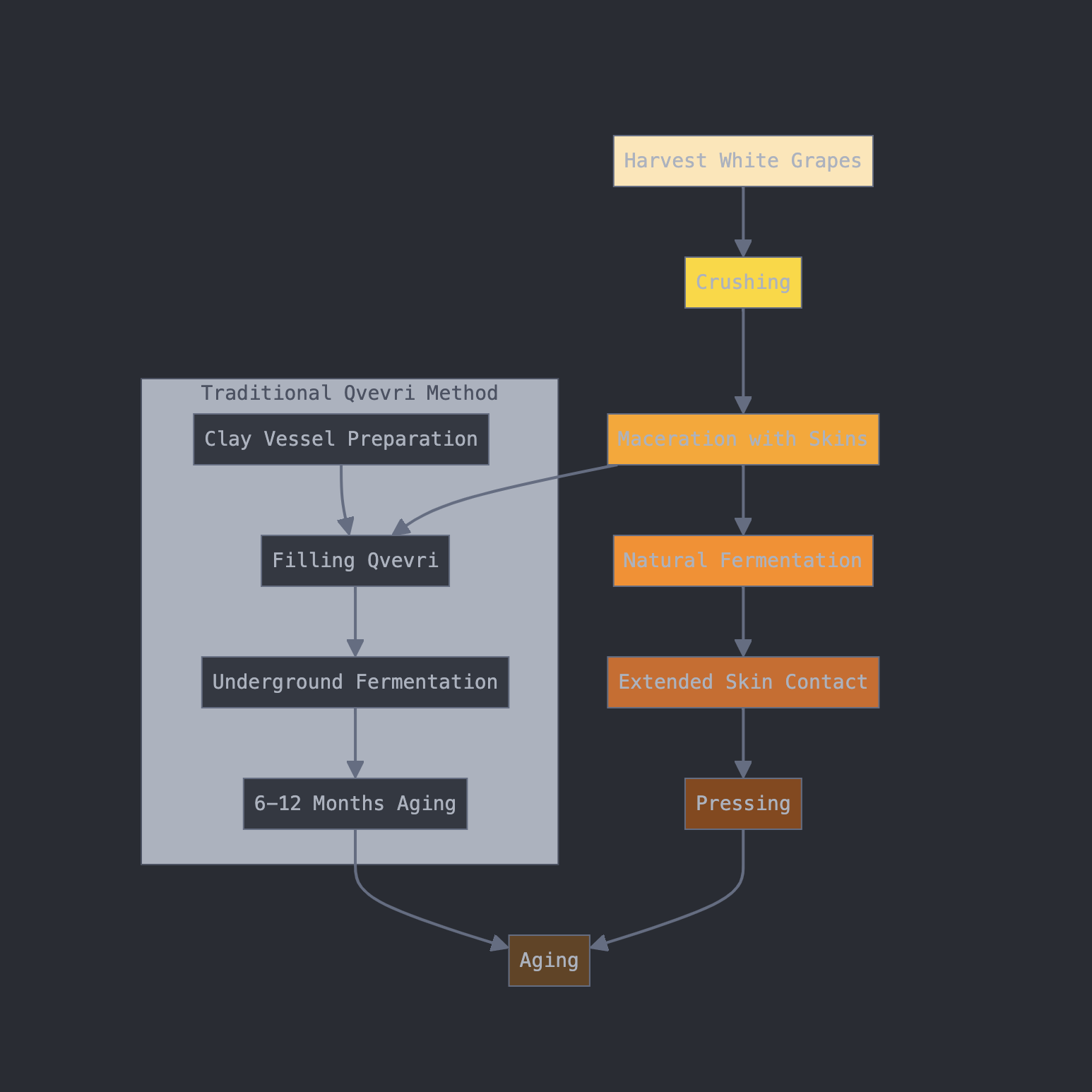
In the world of wine, few categories challenge our preconceptions quite like orange wines. These amber-hued elixirs represent more than just a style—they embody a philosophy of winemaking that bridges millennia of human innovation. By understanding their production, pricing, and market dynamics, we can better appreciate why these wines command both attention and premium prices in today's market.
The transformation of white grapes into orange wine involves a fascinating interplay of chemistry and time. Unlike conventional white wine production, where grape juice is quickly separated from skins, orange wines embrace an extended period of skin contact that fundamentally alters their character. This process, known as maceration, typically extends from a few days to several months, creating a complex cascade of chemical reactions.
During maceration, three key processes occur simultaneously. First, phenolic compounds slowly migrate from the grape skins into the juice. These compounds, including tannins and flavonoids, create not only the wine's characteristic amber color but also its distinctive textural elements. Second, natural yeasts present on the grape skins initiate spontaneous fermentation, producing unique flavor compounds that wouldn't develop in conventional fermentation. Finally, the extended contact allows for the slow extraction of aromatic precursors that evolve into complex tertiary aromas during aging.
Georgia's contribution to orange wine production extends beyond mere historical significance. The qvevri—a large clay vessel buried underground—represents one of humanity's earliest examples of technological innovation in food preservation. The vessel's design is far from arbitrary: its egg-like shape creates natural convection currents during fermentation, while the clay's microporous structure allows for gentle oxygen exchange that helps develop complexity without oxidation.
Modern analysis has revealed why these ancient vessels work so effectively: the consistent underground temperature (typically 55-58°F) creates ideal conditions for slow, steady fermentation, while the clay's mineral composition may contribute subtle elements to the wine's final character.
Recent market data reveals fascinating trends in orange wine pricing and distribution. According to industry analysts, several factors contribute to their premium positioning. Production scale typically ranges from 500 to 3,000 bottles per vintage, compared to 10,000+ for conventional wines. This limited scale directly impacts cost structures and final pricing. Traditional methods require 2-3 times more human intervention than conventional winemaking, particularly during the critical maceration period. Consumer willingness to pay premium prices for authentic, artisanal wines has grown significantly, with orange wines seeing particular strength in urban markets and fine dining establishments.
The challenge in marketing orange wines lies not in their novelty but in educating consumers about their unique characteristics. These wines often display textural complexity, with the extended skin contact creating a tannic structure more reminiscent of red wines, offering a unique mouthfeel that can surprise first-time tasters. The slow extraction of compounds from skins and seeds produces a broader aromatic spectrum than conventional white wines, often including notes of dried fruits, nuts, and tea. Natural haziness and deep amber colors distinguish these wines visually, requiring education to help consumers understand these characteristics as markers of quality rather than flaws.
